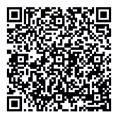







Brett
Steve

















Brett
Steve









National Anthem Day, March 3
Navy Reserve Birthday, March 3
Hug a GI Day, March 4
K9 Veterans Day, March 13
American Legion Birthday, March 15
Medal of Honor Day, March 25
Vietnam Veterans Day, March 29
There are many days to be thankful in March. As a nation, we celebrate women’s history, our National Anthem, the Navy Reserves, and the American Legion. We honor our K9 Veterans, Medal of Honor recipients, and Vietnam Veterans. We’ve touched on most of these within the pages of FireWatch Magazine’s March issue. And here, in place of this Editor’s ramblings, let’s honor our National Anthem.
O say can you see by the dawn’s early light What so proudly we hailed as the twilight’s last gleaming
Whose
O’er
And
Gave proof through the night that our flag was still there O
that star-spangled banner yet
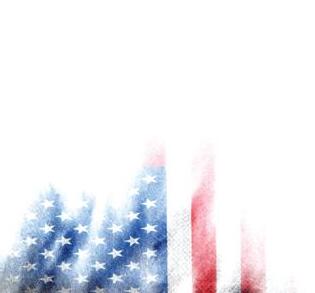
Sincerely,
Toni Hedstrom, Managing Editor FireWatch Magazine
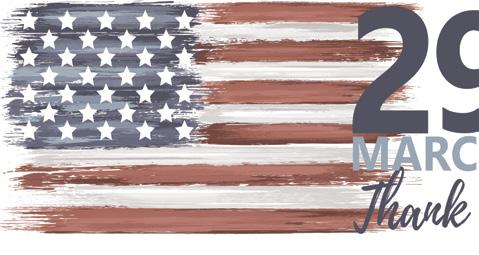
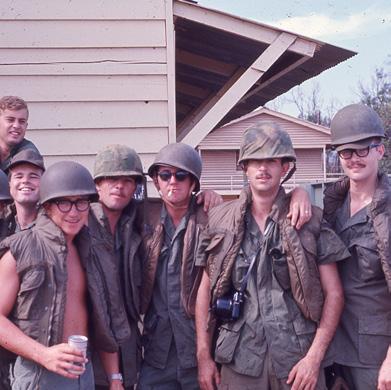
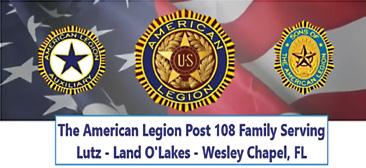
The American Legion was chartered and incorporated by Congress in 1919 as a patriotic veterans organization devoted to mutual helpfulness.
If you have served at least one day of active military duty since December 7, 1941 and were honorably discharged or you are still serving active military duty honorably, you are eligible for membership with The American Legion.
The Auxiliary and The Sons provide an opportunity for children, grandchildren and spouse of veterans to honor their family members that served our country, and keep their legacy alive for years to come.
SERVICES AND PROGRAMS:
TROOP AND FAMILY SUPPORT
USAA FINANCIAL CENTER
WOMEN VETERANS
BOY STATE/NATION
NATIONAL EMERGENCY FUND

The American G.I. of the Vietnam era had big shoes to fill. They were the sons and daughters of the “Greatest Generation.”
They had grown up in 1950s America, where gathering around the family radio for news, playing board games, riding bikes, and playing toy soldiers were average pastimes. Their parents and grandparents still reveled in the patriotic glory that enveloped the United States during and after World War II.
And they still held a profound fear and hatred of communism.
Communism as an enemy of the United States became a prevalent issue in the early 1950s during the Truman administration as they attempted to root out communism amongst America’s government ranks.
The unrest in Korea also consumed this period with a clear tie-in to our fight against communism. President Truman stated that the Korean invasion was “very obviously inspired by the Soviet Union.” Which, in turn, made it morally unavoidable for


America to get involved in that conflict.
But, after three years, unlike the victories of World War II, the Korean War ended in stalemate and the senseless loss of over 36,000 American service members.
We had not lost the war but had not won it either.
As future Vietnam service members enjoyed their middle school and high school years without war, the fear of communism never ceased. America had instilled fear in the world, and even within its own borders, after the atomic bombs were dropped on Hiroshima and Nagasaki.
That, along with the development of hydrogen bombs in 1952, made the survival of any nuclear war apparently impossible.
Unease was set upon the world, and in America during the 1950s and 60s, America’s youth practiced “Duck and Cover” drills in schools. World wars were no longer between soldiers on distant battlefields; now, civilians were at risk in their homes and schools. Vietnam service members had been born into the Cold War.
In the background of their lives had always been the Vietnam War, a conflict with roots as far back as the 1800s, although historians say it officially began in the 1950s.
For many years, American military advisors had boots on the ground in Vietnam, but it wasn’t until the Marine Corps entered Da Nang in March of 1965 that the U.S. officially had troops deployed to fight in the conflict beyond an advisory role.
In the following decade, young Americans, 18-, 19-, and 20-years-old, were called to the fight. Many were inspired and determined to fight communism regardless of where it was in the world.
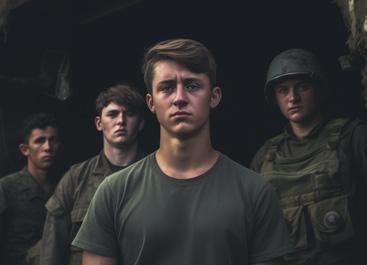
It was the first conflict witnessed daily on living room televisions across America.
In the beginning, and until the Tet Offensive of 1968, most Americans supported the war effort. But by 1970, the tide of sentiment had turned. Most Americans were tired of the war and believed deploying troops to Vietnam was a mistake.
Sadly, there was no way to take back the tremendous number of American lives lost in the conflict.
Nearly 3 million Americans had been stationed in Vietnam at some point during the conflict. In April of 1969, the American combat troop count in Vietnam peaked at 543,000.
In the end, more than 58,000 American lives were lost. Just like the Korean War, there were no winners.
During the Vietnam War, a typical tour of duty was one year for enlisted men and six months for officers. The Marines and the Navy were assigned 13-month tours, while the special forces served six months. Extending or renewing a tour of duty was rare.
These American soldiers, airmen, Marines, and corpsmen had grown up seeing the American military as heroes. It was the American military who brought down the original Axis of Evil and saved the world from the Third Reich. They remembered the parades, the flags, the confetti.
But, upon their own return home, they found indifference.
Back in the rest of the world, things had changed –drastically.
Returning service members were not the heroes they remembered. Instead, they were treated with hostility. The American people had turned their back on the war, and in turn, they had turned their back on America’s troops.
The war had been brutal, as all wars are. But, for the first time in American history, the public blamed the troops and the government. The sacrifices and loss of American service
members were never acknowledged or appreciated. Many who returned kept their service experience a secret when applying for jobs or meeting new people. The horrors of war were internalized. In hindsight, it was a most dreadful and misguided mistake of the American people.
More than 58,000 were dead.
Out of those killed, 61% were younger than 21 years old. 11,465 of those killed were younger than 20 years old.
Those who lived included more than 75,000 severely disabled.
5,283 limbs lost. 1,081 multiple amputations.
The average age of the men killed was 23.1 years.
Vietnam veterans represented 9.7% of their generation.
Of those who served, 97% were honorably discharged, with 85% making successful transitions into civilian life.
91% of those polled say they are glad they served.
74% say they would serve again, even knowing the outcome.
1. Source: uswings.com http://tinyurl.com/36r52yfy



The need for a concealed carry license is a question we receive almost daily in our store. It is a new question in Florida due to Governor DeSantis passing the Permit-less Carry Law on July 1, 2023.
Since then, most people have incorrect information on what this really means. This article will explain what the new law means and your rights. Additionally, I’ll cover some of the new law’s pitfalls and why it is still a good idea to maintain or apply for your Florida Concealed Carry Weapon license (CCW).
The new law is relatively simple on the surface. All legal residents of Florida who possess a valid Florida ID can legally own a firearm and carry that firearm concealed without a permit.
But here’s where it gets tricky:
1.

Carrying concealed weapons differs from transporting firearms under this new law. That means if you carry concealed while going about your day, you’re legal until you get into a vehicle. Now, the weapon must be taken off your person and placed into legal “Transportation” of the firearm. Under Florida Statute 790.00 (17), a concealed firearm in a vehicle must be securely encased in the glove box, center console, or other closed container you would have to open in order to retrieve the firearm.
2. Without a CCW, you cannot have a firearm within 1000 yards of a school. You can’t even drive past a school without being in violation.
3. Without a license, you cannot carry outside Florida; your rights stop at the state line.
4. Without a CCW, you will incur a three-to-fiveday hold for all firearm purchases, depending on which county you purchase in. Check your local county laws for your county’s “cool-off period.”
5. With all the restrictions on carrying without a CCW, taking the Concealed Carry Class is still a good idea before applying for your license. The training is an in-depth look at the “do’s and don’ts” of carrying concealed in Florida. Just the knowledge alone will benefit all those wishing to carry concealed, even if you never apply for the license.
If you decide that the license is good for you, some benefits include:
1. You no longer must remove the firearm from your person when entering a vehicle. With it, you can run your errands and get in and out of the vehicle without potentially having someone see you with a weapon and claiming that you were “brandishing a firearm in public.” Trust me, it will happen and will likely result in a lengthy discussion with Florida’s finest and possibly involve your lawyer.
2. Purchasing a firearm with a CCW license provides a waiver for the “cool-off period.” The waiver means you purchase your firearm, pass the background check, and take your firearm home the same day (this one is my favorite).
3. You can drop off little Johnny or Jenny at school without violating any laws. Obviously, you cannot go into the school, but you won’t be breaking any laws driving through a school zone.
4. You will enjoy license reciprocity in 37 other states. Always check the specific rules in the state you’re traveling through or to, however, to see if your license is valid there.
The new law does not eliminate the need for a background check—we get this question almost daily!
Just because you no longer are required to have a government-issued permit to carry does not mean you can purchase a firearm without a background check. Obviously, you must be legally able to own a firearm to carry it. So, if you have a lengthy rap sheet and you know your rights to own/purchase a firearm have been restricted, you probably don’t want to be caught carrying one.
If you have any other questions, please stop by the 2nd Amendment Armory in Brandon, Florida, and chat with us. We’d love to help!
Chris “Ranger” Gay is the owner of 2nd Amendment Armory in Brandon, Florida.

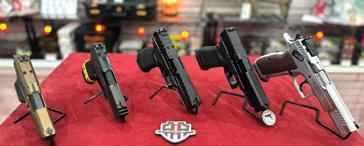

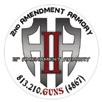

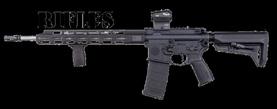
 By Toni Hedstrom
By Toni Hedstrom
Roughly 5000 nurses served in Vietnam. What they saw could never be imagined, even in the darkest nightmare.
They were there, ready as the helicopters arrived with the torn and mangled. They would rush in the heat and gloom to fight for the lives of those broken around them.
For the G.I.s, they were a reminder of home, someone to speak to them in a familiar way, a reminder of the love they left behind on American soil.
For those destined to die, they were the last face they saw, offering kindness, compassion, and care
Captain Eleanor Grace Alexander, U.S. Army. Died in a plane crash on November 30, 1967.
Second Lieutenant Pamela Dorothy Donovan, U.S. Army. Died of a rare Southeast Asian Virus on July 8, 1968.
Second Lieutenant Carol Ann Elizabeth Drazba, U.S. Army. Killed in a helicopter crash near Saigon on February 18, 1966.
Lieutenant Colonel Annie Ruth Graham, U.S. Army. Suffered a stroke in country on August 14, 1968.
Second Lieutenant Elizabeth Ann Jones, U.S. Army. Was traveling with 2LT Drazba and killed in the same helicopter crash, February 18, 1966.
Captain Mary Therese Klinker, U.S Air Force. Died in a plane crash on April 4, 1975, just three weeks before the fall of Saigon.
First Lieutenant Sharon Ann Lane, U.S. Army. Killed in a rocket explosion on June 8, 1969.
First Lieutenant Hedwig Diane Orlowski, U.S. Army. Died alongside Cpt. Alexander in a plane crash on November 30, 1967.
The American Red Cross sent young female college graduates to boost troops’ morale in Southeast Asia.
They were called Donut Dollies.
“A few years ago, I wrote something down because it was too important for me to lose the memory of this moment,” recalls Holly Watts, a Donut Dolly from 1966 to 1967.
“I noticed him waiting in line, wearing black leather like so many others that day. The large book lay open under the thick glass, and he approached it cautiously. Turning the pages slowly, he paused, running his finger down the length of the page and finally across. With shaking hands, he copied numbers on a slightly crumpled envelope.
“I knew this was his first visit to the Wall. He looked so lost and in such pain. I touched his arm and asked if I could help. He just showed me the paper, held tightly now. I pointed to the other side of the Wall’s apex, past the crowd filling the path in front of us.
“I saw his eyes sweep the area. They were not the enemy, but still, he did not move. As the crowd grew, I took his callused hand, and we walked together until we reached panel 47W.
We stood together in the sun, drenched in our pain. I squeezed his hand and slowly moved away.
“Oh, how I wish I had hugged him…for both of us.”
1 Source: www.vvmf.org/topics/Women-in-Vietnam



 By KeishaMarie Douglas
By KeishaMarie Douglas
Women’s History Month, which started as Women’s History Day, highlights those women who pioneered the way for future generations.
Although officially recognized in 1987, only 36 years ago, according to the womenshistorymonth.org website, women have been leading the way since the era of President George Washington.
Military women have overcome unfathomable challenges and sacrifices, from stereotypes, discrimination, other equal opportunity struggles, and, most recently, MST (Military Sexual Trauma).
However, through resilience and determination, women find a way to prevail.
There have been some recent notable events, such as the prestigious U.S. Air Force Thunderbirds, a male dominant crew with only a handful of female pilots, added Captain Remoshay Nelson, becaming the first African American female pilot to join the team.
There was the all-female pilot squadron who made history with the Super Bowl flyover last year.

In 2017, Fort Benning’s Infantry Training School—an historically all-male institution—graduated 18 female soldiers.
Military women are kicking down doors and not apologizing, showing younger generations of women that there is no glass ceiling for whatever it is they want to do when they grow up. Seeing the women of today doing so many magnificent things inside and outside the military should definitely be celebrated this Women’s History Month.
This month, thank a veteran woman for her service and contribution, or better yet, buy her a coffee, if possible.
Sources:
“I won’t be the last”: Captain Remoshay Nelson is a history-making Thunderbird (wmar2news.com)
Women’s History Month | National Women’s History Museum (womenshistory.org)
How the Army made the first female InfantrymenTask & Purpose (taskandpurpose.com)











Every April, Flags of Honor Escorts and its founder, David “Stupid” McElroy, travel the state of Florida to visit Gold Star Families Memorial Monuments (GSFMM). The monuments were inspired by Medal of Honor recipient and American hero Hershel “Woody” Williams.
Affectionately known as Woody, this World War II veteran made it his mission to honor the families of service members who made the ultimate sacrifice. Since 2015, the Woody Williams Foundation has installed 132 monuments, with another 62 underway.
Flags of Honor Escorts organizes motorcades and ceremonies to highlight Gold Star Families and monuments in each community they visit with their Florida Gold Star Families Memorial Ride.
McElroy says the Gold Star Children have the biggest impact on the mission.
Only Tampa’s Florida Gold Star Families Memorial Ride lasts multiple days since Tampa is home to two existing monuments and will soon have a third.
The first Tampa monument, located at Franklin Middle Magnet School and dedicated in 2015, was very special to Woody and thus a favorite stop for Stupid and his entourage.
It was the students of Franklin who made that monument come to life.
“Because of the Franklin Middle Magnet School students, this will always be one of my favorite GSFMMs to visit,” McElroy says. “Meeting and speaking with these students each year reminds us that we all have a legacy to leave, not just of ourselves, but for those who come behind us to find ownership in themselves.”
The students, likewise, enjoy the visits. What kid wouldn’t like calling someone “Stupid” without consequence? While the visit is entertaining, it is also profoundly engaging for the students.
McElroy visited the Franklin monument to film a short video just hours before the passing of Hershel “Woody” Williams to honor his service.
“This GSFMM was one Woody held very close to heart because of the sacrifice, service, and impact these children have made in Tampa and the Gold Star Community,” McElroy said.
Flags of Honor Escorts Gold Star Families Memorial Ride for Florida will be held in April and will visit the Tampa area April 1618, 2024. For more information on the memorial rides, contact Flags.of.Honor.Escorts@gmail.com.
To learn more about the inspirational story behind the fundraising efforts for the Tampa Gold Star Families Memorial Monument at Franklin Middle Magnet School, visit WoodyWilliamsFoundation.org.

The missions between classes enable us to sharpen our skills further and reinforce our training. We’re hit by sniper fire, which always startles us. It’s frightening to be shot at by an enemy you can’t see.
It’s weird not being protected by a classroom environment. We’ve been fortunate so far. No one has been hit or injured. Booby traps are a major problem. Our training enables us to spot them, but you never know when you might miss the signs of one. One overlooked clue, and someone would pay with their life or limb.
The team is reacting like clockwork, but still, I can feel the tension building in all of us. The training goes on and on. Sleep and rest feel like things of the past. It’s drilled into us that duty, honor, and the death of the enemy are our only purpose for being.
We spend hour after hour on the weapons ranges. Days are filled with hand-to-hand fighting and weapons firing. Between training and missions, we drink beer while learning about each other, sharing our deepest dreams. This team has no secrets!
The team—every last one of us—believes in one common idea: a power deep inside us led us to The ’Nam.
The team works as a whole in the field, but we break into small groups at base camp.
BY: KEN SMITSSmitty, Gator, and I stay together all the time. Worm and Willie can usually be found playing Worm Power versus Black Power.
Tex and Loverboy are developing a bond of sorts. Tex and Stoney spend a lot of time together, especially when Loverboy is primping.
Frenchie hangs around with Doc, but then Doc makes it a point to spread his free time between everyone.
DJ stays by himself most of the time, particularly when he’s not with Billings, who’s a loner; he doesn’t want to get close to any of us.
Our last mission defined our team and proved our training had become second nature.
We came to a danger area along the trail we were following. It was a river about twenty feet across, three feet deep, and slowly moving.
Tex and I were the first to cross, followed by Frenchie and Worm with one of our machine guns. The four of us formed the corners of the safe zone the rest of the team would move into.
As Doc and Smitty entered the stream, gunfire broke out behind them.
By now, I’ve learned to distinguish the sounds of various weapons. The M16 has a high-pitched popping echo, and the AK47 makes a deeper cracking noise. The M16 fired first.
Smitty and Doc disappeared back into the jungle. Frenchie and Worm came on line with Tex and me at
the river’s edge. Seconds later, the jungle was filled with the rattle of weapons fire. We held our position as the battle raged for two or three minutes. The sound of our M60 and M16s outlasted the cracking of the AKs.
Then, there was an eerie silence.
Billings later said the team reacted perfectly, and everyone did their job as they were trained.
At night, I sometimes run over each person on the team, like organizing several mini-bios in my head. I’m getting to know each guy on the team as if we’ve been friends since grade school.
Billings doesn’t spend much time with us unless we are training. We live in open barracks, but he has a private room that is off-limits to us. He never engages in any conversation that isn’t directly related to training, mission, or killing the enemy.
Tex, DJ, Stoney, Loverboy, Doc, Frenchie, Willie, Worm, Smitty, and Gator. They have become my brothers. We have learned to predict each other’s movements. We feel invincible.
But soon…too soon…we will lose one of our own.
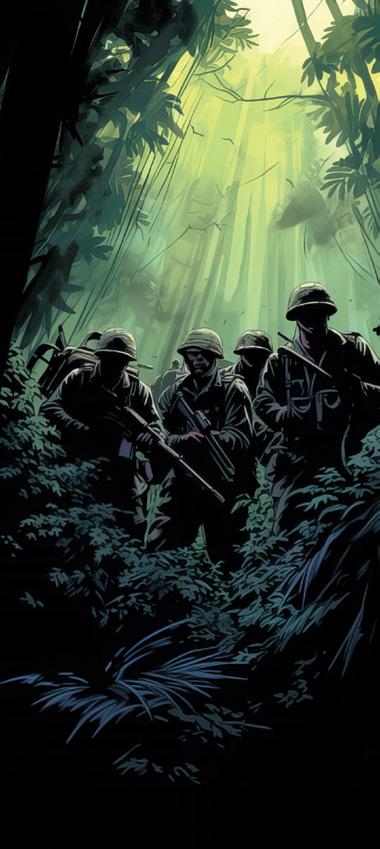


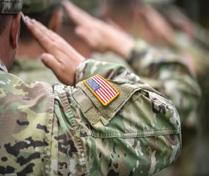



instead of those we do not. We move toward our dominant thoughts, and worrying is like praying for things we don’t want. This, of course, is not to say we’re not aware of problems and contingencies but that we must remain solution-oriented and focus our energy on finding answers to our problems.
It’s our responsibility to ensure that we focus on things that support our goals.
We know that energy flows where Focus goes; so, in another important application of the power of Focus, we should give more attention to those things we want more of

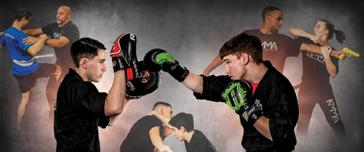
I am honored to write for you today for so many reasons! First and foremost, I had the great honor of serving as both an enlisted soldier and an officer in the Army. So it’s also a great honor to serve you, knowing that this is a magazine, first and foremost, whose mission is to serve those who served our great country. Thank you for your service!



Seemingly everybody in the veteran charity or philanthropy space knows Mark Van Trees. If your work connects to military, veterans, or Gold Star families, chances are you’ve crossed paths.
Despite knowing him for 11 years, I endeavored to learn more about Mark, his work with Support The Troops, and other nonprofits. I wanted to know what makes him tick. Getting him to sit still for an hour is nearly impossible but well worth the interruptions and pauses.
I asked him to tell me a little about his life journey. He proceeds in his usual concise manner.
“I was born in D.C., grew up in Virginia, and went to Indiana on a soccer scholarship. I met my lovely wife there,” he adds with a twinkle in his eye.
Mark says his military connection derives from his father, a West Point graduate with the unique distinction of being awarded the highest number of academic awards in the school’s history and who later became a professor at MIT.
Mark proudly points to three textbooks on his shelf, “I watched him sit at the kitchen table and write those on a legal pad with a No. 2 pencil.”
His pride is evident.
Mark was in the restaurant business for 25 years and had a company that serviced all the Starbucks in Florida. Mark says this eventually led to his connection with Support The Troops, Inc. He was recycling commercial coffee equipment to ship to Afghanistan and Iraq while arranging for Starbucks to donate coffee for care packages.
“That’s how I met Bob,” he says.
Bob Williams was the founder of Support The Troops, Inc. He served in the U.S. Navy, but after suffering severe injuries to both knees in his sixth year, he received a medical discharge.
Bob started the American Fabric Filter company 35 years ago, and after retiring, he turned the business over to his two sons so he could pack boxes for troops, a way to continue his service.
Bob packed boxes for troops six days a week (except Thanksgiving and Christmas), starting every day at 4:00 a.m. from 2008 until January 19, 2012.

I met Bob at the behest of my brother, a USMC reservist, who had received care packages from Support The Troops while he was in the Middle East. Bob and I began an annual care package drive with my students bagging and making cards and letters to ship overseas.
In August of 2012, I called Bob to set up for the September campaign, but Mark answered instead.
I learned that on January 19, 2012, there was an unfortunate accident, and a pole fell and
struck Bob in the head. Bob suffered a Traumatic Brain Injury (TBI). He has been at the Baldomero Lopez Memorial Veterans Nursing Home for 11 years.
Having just sold his company, Mark was able to take on the challenge of keeping the care packages moving. He had been helping Bob get donations, so it was a natural fit for Mark to take the reins of Support The Troops, Inc.
I asked about Mark’s other hats because I know there are many.
Mark is the Florida representative for the New York-based Tunnels2Towers organization, a nonprofit in honor of Stephen Siller, a New York City Firefighter was killed on Sept. 11, 2001, whose remains have never been recovered.
Tunnels2Towers works to pay off the mortgages of first responders and Gold Star families who have lost their loved ones in the line of duty.
“We paid off 200 mortgages last year,” Mark says.
He also says the nonprofit broke ground in December 2022 on Let’s Do Good Village in Land O’Lakes, Florida. “We’re going to build 97 homes for Gold Star families and first responder families, and 20 of those will be smart homes for those with catastrophic injuries.”
Ten years ago, Support The Troops, Inc. started a partnership with the Tampa Bay Lightning.
“Lightning owner Jeff Vinik’s father, Donald, is a WWII veteran, and he wanted to do something to give back in his honor,” Mark explained.
Mark’s team works with the Lightening for every home game to provide a veteran guest of honor next to the national anthem singer, usually Retired Air Force LTC Sonia Bryson. He also coordinates Seats for Service, an organization seeking season ticket holders to give tickets to service members if they do not attend an event.
Mark’s latest partnership is with Southeastern Guide Dogs in Palmetto, Florida. The goal is to get service animals to James A. Haley Veterans’ Hospital as “facility dogs.” These pups will be, for the lack of a better way to say it, the litter mates who might not cut it as seeing-eye dogs, diabetic support animals, or PTSD support, but who can learn not to bark, pee, or poop at the wrong time.
A hospital employee is vetted to care for the animal. When the employee goes to work, so will the pup. The animal will be handed over to a volunteer who takes it for pre-approved patient visitation.
Under the mantle of leadership at Support The Troops, Mark supports 16 other local charities and even a few national organizations. They include Thomas’s Promises, a group collecting 2700 backpacks filled with food delivered every Friday to seven Pasco County schools. Another is Hands Across The Bay, Julie Weintraub’s charity that works to stabilize
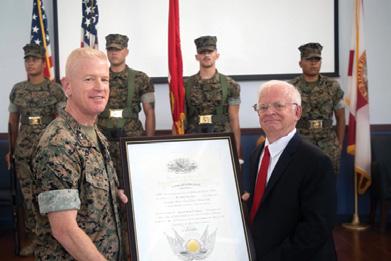
families in crisis due to no fault of their own and advocates for domestic violence awareness and prevention. Others include Miracles Outreach, a local foster home, and The Perfect 10, a local charity that honors the life of a young lifeguard killed at Adventure Island in 2011.
At the national level, Mark has close ties to the Woody Williams Foundation and the Medal of Honor Foundation.
In 2019, Mark chaired the Tampa committee that hosted the Medal of Honor Foundation Gala, an event forever in my memory as I was seated next to Hershel “Woody” Williams and Mark’s delightful mother and father.
Mark never sat down that night as he coordinated Medal of Honor recipients, along with Gary Sinise, George Strait, and a host of other politicians and celebrities.
Mark was recently named an Honorary Marine, so I asked what that meant to him.
“It was pretty overwhelming,” Mark said.
The process started two years earlier when Mark’s USMC supporters submitted a packet. He shared the black spiralbound, laminated book with me. On July 17, 2023, Major General Paul Rock presented him with an honor so rare it has only happened 72 times in the 248-year history of the United States Marine Corps.
Mark shares this honor with Bob Hope, Gary Sinise, Chuck Norris, and Jim “Gomer Pyle” Nabors, to name a few. He is in good company.
Mark has met many military heroes, so I asked which one had most impacted him.
“Far and away, Ty Edwards,” Mark says with enthusiasm.
USMC Lieutenant Colonel Ty Edwards was shot in the head during an ambush in Afghanistan’s Kunar province on October 18, 2008. His interpreter, Hakimi Quadratullah, just 20 years old at the time, was the first to reach him. He and other Marines withstood enemy fire as Edwards was treated in the field for his profoundly grave wounds.
Edwards wasn’t expected to live, much less ever stand again. Mark met the retired Lieutenant Colonel when he and his family started attending his church.
During the 2021 Stanley Cup finals, Ty Edwards defied all odds and stood up for the National Anthem. Mark was right by his side.
“I’ve never heard him complain. I have never heard him say, ‘Why did this happen to me?’ He is just an amazing, amazing man,” says Mark. “If you think you’re having a crappy day, look at what this man has gone through.”
Being an educator at heart, I asked Mark to brainstorm suggestions or ideas for ways to engage young people in service for the groups he serves.
“We are seeing a generation that has gone too far away from service,” says Mark.
He was raised, like me, always to put someone else first. “At the end of the day, if you’ve helped one person, it’s been a good day.”
He wants to see us get kids back to where it’s not about “me”; it’s not about cell phones or air pods. It’s about helping someone that needs help.
“Merely one percent of this country serves so the other 99 percent can step up and get behind them.” He says. “Youth can do service projects and volunteer, especially at places like the VA hospital and nursing homes. There are a lot of folks that we take for granted. If it wasn’t for them, I mean, they’re the ones that raised their hands, took an oath, and are willing to die for this country, so I think we important for us to support them.”
To learn more about the great work of Support the Troops, Inc. and find out how to get involved, visit supportthetroopsusa.org.
USF Health at the University of South Florida in Tampa is conducting a research study on the effect of practicing Brazilian Jiu Jitsu on symptoms of Post Traumatic Stress Disorder in Veterans.
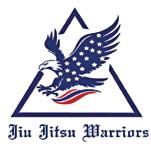

PARTICIPANTS WILL ENGAGE IN 20 SESSION OF JIU JITSU TRAINING AND COMPLETE 3 ROUNDS OF SURVEYS. PARTICIPANTS WILL RECEIVE A $25 GIFT CARD FOR EACH SURVEY ROUND COMPLETED.
POSSIBLE BENEFITS INCLUDE: BETTER SLEEP,
You may be eligible if you are: Veteran or Active Duty (U.S. service member with prior deployment), Male or Female, Aged 18-44, Experiencing symptoms of psychological trauma related to military service, Not in psychological crisis or substance dependent, Able to perform physical activity and Able to read and speak English. THERE IS NO COST TO PARTICIPATE.
DATE OF EVENT
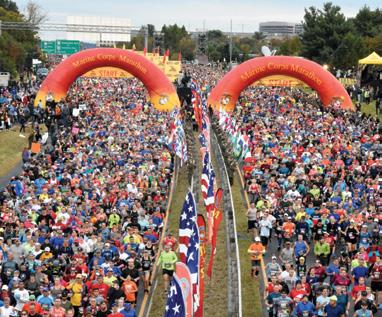
RECOGNIZED FOR IMPECCABLE ORGANIZATION ON AN ICONIC COURSE MANAGED BY THE US MARINES IN ARLINGTON, VA AND THE NATION’S CAPITAL, THE MARINE CORPS MARATHON IS ONE OF THE LARGEST MARATHONS IN THE US AND THE WORLD. KNOWN AS ‘THE BEST MARATHON FOR BEGINNERS,’ THE MCM IS THE LARGEST MARATHON IN THE WORLD THAT DOESN’T OFFER PRIZE MONEY, EARNING ITS NICKNAME, “THE PEOPLE’S MARATHON.”

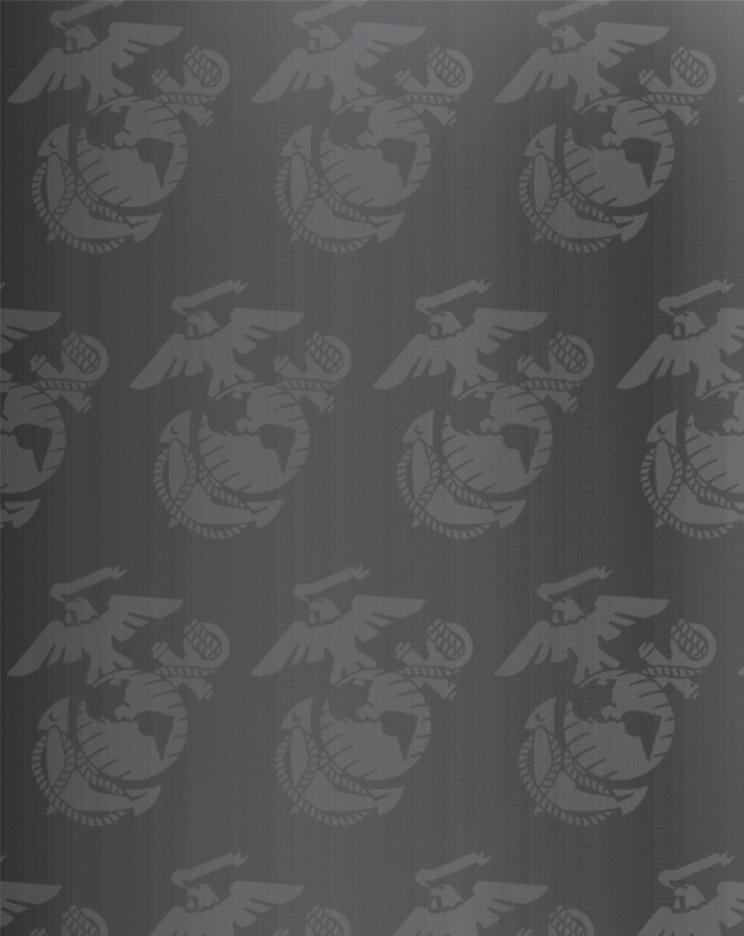
The Marine Corps Marathon Organization (MCMO) strives to offer an enjoyable, well supported, respectful, inclusive, safe and fair competition environment. We depend on our participants to achieve this by upholding the high standard of conduct that the United States Marine Corps is known for. Please help us to provide a rewarding experience for all by adhering to the MCMO “Corps” Values.
sponsored by:

I was just a kid from a small town in southern New Jersey. My uncle was a Rabbi in Pittsburgh. Before his retirement, he and I took a 30-day trip to the holy land, Israel, with members of his congregation.
At the time, I had a full ride to Rutgers University: half academic, half baseball.
We were in Israel for three days. I was sitting at an outdoor cafe drinking a cup of tea in Haifa, northern Israel. Across the street was a bus stop where people gathered for the bus. As soon as the bus pulled up, a man, a Palestinian suicide bomber, grabbed a three-to-four-year-old girl out of her mother’s arms and ran onto the bus. I got up to go after him, took 2 steps, and the bus blew up.
I was hit by a piece of the bus, spit out two teeth, and had an injury to my left eye.
There were two soldiers nearby who grabbed me and asked me to come and help. When a tragedy like that happens over there, they don’t wait for ambulances.
There was a hospital two blocks away, so we just picked the victims up and ran them to the nearest hospital. They put a person on each of my shoulders and said “follow us!”
They were also carrying two people each. I made four trips with soldiers, carrying two victims each time.
No one on the bus survived. I looked for and asked about the little girl, but no one had found her. The bus was full of body parts, and she was
among them, but nothing was recognizable.
Every day of my life, I still see that little girl’s face in my head; her name was Aviel.
The two soldiers walked back to the hospital with me, insisting I get checked out; they stayed with me the whole time. It was June 30, 1983.
The next day, July 1, 1983, was my 18th birthday. I signed up with the IDF (Israeli Defense Force). Nothing else mattered.
During my basic training, the marine barracks in Beirut, Lebanon, was struck by a Hezbollah suicide bomber, killing almost 300 Marines on September 28, 1983.

A fellow cadet in my platoon from New York City told me that everyone in his family, when they turn 18, joins the IDF for the mandatory 2 years of service. He, myself, and three other Americans already serving with the IDF asked to help our fellow Americans in Beirut.
When we arrived in Beirut, we were given Marine uniforms and helped them dig out for two weeks.
At the time, Israel was at war with Lebanon, Syria, and Hezbollah. After six months of basic training, we went right to the front.
To say I was highly motivated was an understatement. I carried the “saw” in the platoon, a Negev; 7.62 NATO. It was semi-auto with the 3, 20-round magazines. I also carried 10, nine-meter belts on my shoulders and around my neck that could be made into full auto in a few seconds.
I was the designated door opener. My sidearm was an Uzi that I wore strapped to my chest. That Uzi saved my life in 1987; it took a few AK47 rounds. It was destroyed, but I was ok.
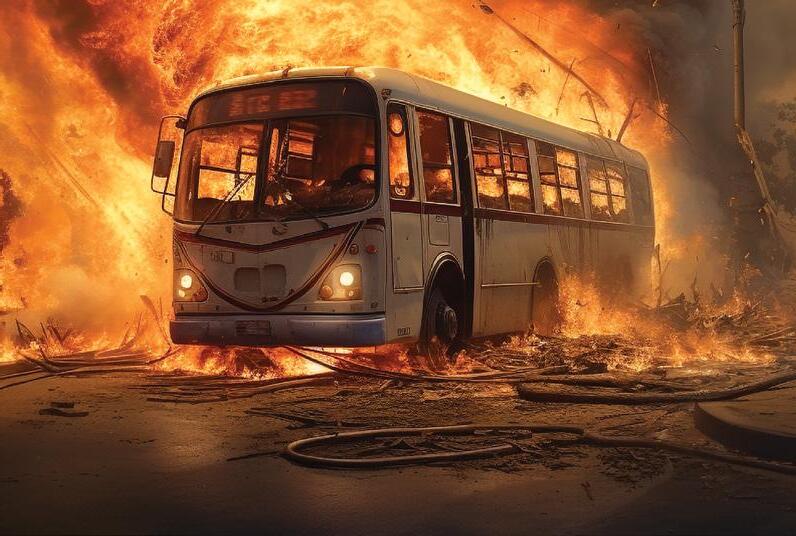
I was recon and the artillery signal caller. I could do that job in my sleep. My father served in the U.S. Army and did the same. His father, “Pop,” served in WW2. Pop joined because he wanted to find members of our family still living in Europe, but was unable to find any.
During the U.S. Gulf War, when Iraq was shooting Scud missiles, I was volunteered by my colonel to help destroy the mobile missile launchers. I was sent to Iraq and joined a squad of U.S. Army Rangers. When the missile launchers saw an American plane in the sky, they knew there was a bomb on the way, so they launched and ran.
During U.S. Operation Chaparral, we set out in two Humvees. The base would find the launchers on the satellite and give us the coordinates. My job was to find them. Once we did, we would dismount and sneak up on them on foot.
We would continuously fire at the bottom third of the missile where the fuel was, and the missile and launcher would explode along with the warhead, so we had to stay about 100 meters
away when we opened fire. There were two together a few times, so we would get both. We destroyed 21 missile launchers in total.
I served ten years and four months. My unit was in Gaza on July 1, so I stayed until my mother’s birthday in November. On November 1, 1993, I was discharged as Lance Corporal First Class—if you were American and weren’t going to stay in, that’s the highest rank you can achieve.
I went to Amsterdam just to relax. I spent two nights sleeping under the tree Anne Frank wrote about in her diary. I got home on my mother’s birthday without letting anyone know on November 24.
I had been home only a few times over that ten years. My mother asked if I was done and wasn’t going back.
“No, I’m done,” I replied. She took my passport, and I’ve never seen it since.
Two days later was Thanksgiving, and I had a lot to be thankful for; I was home.
I’m not a U.S. military veteran. I get no U.S. veteran benefits. The only thing I am permitted to do is salute the flag, which I do proudly!

Often, when reading about or discussing suicide prevention efforts, one hears the word “gatekeeper.” Do you wonder if you are, or could be a gatekeeper?
A gatekeeper is someone who recognizes when a person may be experiencing thoughts of suicide. A gatekeeper can be a parent, friend, neighbor, teacher, coach, mental health professional, or police officer. When talking about suicide prevention, a gatekeeper is simply anyone who is strategically positioned to recognize someone at risk of suicide.
Often, when a person is thinking about suicide, they exhibit subtle changes in behavior or actions, most noticeable to those closest to them. These can be a change in attitude, interest in participating in family or social events, or a change in personal grooming.
A gatekeeper may notice indifference about slipping performance at work or school, increased use of alcohol, or new or worsening drug abuse, talk about feelings of guilt, shame, hopelessness, or unusual purchases, such as buying supplies, objects, or weapons that wouldn’t usually be
needed but could be used for self-harm.
A gatekeeper may get a gut feeling that something is wrong. In these instances, a person with a gut feeling may be apprehensive about asking that hard question: “Are you thinking about suicide?”
Asking that question does not increase the likelihood that the person will actually commit suicide. In fact, just the opposite occurs.
Suicidal people have thoughts of isolation.
No one understands. No one can help. I’m all alone in this.
By asking that hard question, we make a life connection with the person having thoughts of suicide. We can encourage that individual to open up, express those feelings, and focus on life.
By doing that, we help them to be open to seeking resources they need to help themselves.
Now they see that I am not fully isolated. There is someone out there who cares.
A gatekeeper focuses on intervention: keeping the person with thoughts of suicide “safe for now.”


By doing so, this gives the person a moment to refocus. People who have thoughts of suicide often believe there is no other way to fix the problems they are facing that seem overwhelming. With the help of the gatekeeper, the person can begin to understand that there is help available.
The Suicide Prevention Training Institute, a veteran-owned 501(c)(3) non-profit organization, offers the LivingWorks Applied Suicide Intervention Skills Training (ASIST) to the Greater Tampa Bay Community several times a year.
The training focuses on teaching individuals to recognize
when a person is having thoughts of suicide.
It teaches how to converse with that person – and keep that person safe for now.
Participants learn how to ask that hard question and how to respond when the person says, “Yes, I am thinking about suicide.”
The training is for everyone interested in making a difference in someone’s life.
To find out more information about ASIST, please visit https:// educatingtosavelives.org


Today, we lost one of our own.
He was a friend we respected and loved. He may be gone in body, but he’ll remain with us in spirit. He was, still is, and will forever be one of us.
We loved him as he loved life. His death will be our direction. We’ll do our best to carry out the fight he gave so much for and believed in so dearly.
God, be proud of him for what you gave him, and help us to be courageous. What he lived for and died for will always be our challenge.
My friend, we love you, buddy. God take care of you. You’re with Him now. Guide us and protect us.
After the war, I was driving charter buses. The manager at the bus yard asked me if I wanted to go to El Toro Marine Base to be one of the drivers to pick up the refugees coming in from Vietnam.
The job was to take them from El Toro to Tent City down at Pendleton. I remember thinking, this is what we fought for. These people are going to get their freedom. I remember the people; all they had was what they could carry.
Fast forward in my career, serving at the Air Force Flight Test Center at Edwards Air Force Base. One of the first groups of people I met there were Vietnamese who had been in that group of refugees.
One of them, whose brother was a helicopter pilot, had put his whole family on a chopper, a Huey UH-1.
They are among the people you see on the newsreels, the ones who landed on the ship and pushed the helicopter into the sea.
In the tropical forest, we’re like bewildered, dreary children, and the wildwood senses it, playing mischievous tricks on us to prove its superiority.
Our strolls through the timberlands humble us. The rot, constant sweating, leeches, rivers, mountains, trees, brush, vines, and swamps are our unseen adversary and the trappings of the jungle.
The tropical forest’s opponent is man; its purpose is to remain natural and free from the destructive hand of humankind. It turns otherwise sane men into lunatics, friends into enemies, and confidence into ignorance.
Its terror is so intense that it refuses to release you. It’s invisible, it gets inside your head, it’s the wisdom of the maze, and it’s the fear of the unknown.
We bomb it. We burn it. We chop it down. We defoliate it. We curse it. We hate it. We fear it. But, in the end, it comes back. We cannot kill it. We can’t fight it.
There were 40,000 to 60,000 Vietcong troops designated to hunt down SOG teams in Laos and in other northern territories.
These American Recon teams would enter the region and call in airstrikes on the Ho Chi Minh Trail when they observed enemy convoy teams coming down the trail.
SOG Recon teams had the highest kill ratio of any unit in Vietnam. They also held a 100% casualty rate, meaning you would absolutely be shot, killed, or go missing in action.
Many teams just disappeared. No word from them at all, just gone.
To track down these teams, the Vietcong assigned fighters whose only job was to try to destroy them. They would utilize local people, many of whom were forced to help, by having them sit and watch any open areas of land where a helicopter could land.
Upon seeing a helicopter, they would alert the trackers, who would start tracking around that landing zone until they sniffed you out.
They utilized dogs for tracking. All kinds of dogs. Big dogs, little dogs. We would put down CS Pellets to cover our tracks.
You could hear them; they would be sniffing along your trail, and suddenly, they would yelp and start whining. Once they caught the scent of the CS Pellets, they were done. There was no way to get them back on track.
We were out on November 2, 1970, and we stopped to eat lunch. I had squad at the time, so I went to sit on some nearby high ground. My friend Doug and the team’s medic sat on some low ground to eat. A Viet Cong snuck in and opened up on us with an AK-47 and a 30-round banana clip. Doug was hit eight times, and the medic was hit just once. I couldn’t tell the medic had been shot, so I yelled at him as I came down the hill to Doug, “Hey, Medic, you’re right there. Help him!” Doug says, “He’s hit too.” When I went to the medic, I could see he was gasping for air because he was hit in the chest, punctured a lung, and hit a main artery. He died on the spot, but Doug lived.
Tattoos and the military go back to 4000 BC, but let’s take a more recent look.
Tattoos became more popular among American servicemembers during and after WWII as a way to tell the story of their travels and experiences—or as a way to rebel.
But what about today? What do tattoos mean for the modern soldier or sailor? Well, it’s much the same, but different.
Let me tell you about mine, and then we’ll revisit meaning, maybe.
I got my first tattoo pre-military as a rebellious norm. They were becoming more popular among teens in my generation. So, I thought, Why the hell not? There was no thoughtfulness involved, no significance to it. I was just doing the cool thing.
That backfired about half a decade later when my choice of tattoo came under fire for being an outdated style, clearly showing that I only got it at the time to look cool.
Since then, I’ve had dozens more and now I put a lot more thought behind what I would permanently adorn my body with. I’ve written a pieced-together story of experiences, friendships, travels, and people I’ve met—and sometimes lost— along the way, and paid homage to my hometown and ancestors. Somewhere along the way, I added to the tapestry tattoos that held military significance and superstition, and injected little reminder pieces as guiding lights or that provided a pseudo-moral compass.
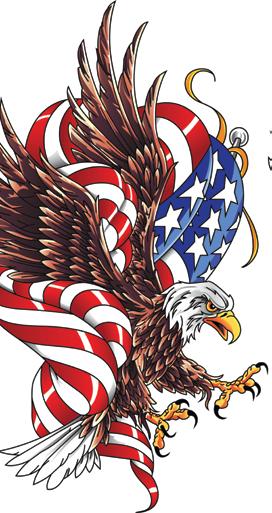
I look back and remember where I was, who I was with, what I was going through, and the time period that each tattoo signifies, and it brings me back, even for just a fleeting moment, to a time so imperative to where I am now.
Without those times and experiences, I wouldn’t be here writing this and living my best life with those I hold most dear, and those I would defend to the end—as I did in service to our great nation—if ever it came to that.
So, back to the meaning of the tattoo part. Tattoos mean whatever they mean to the wearer. Sure, I can look at someone’s compass rose, swallow, or unit badge and see military affiliation. But, it’s the story the tattoos write, all or in part, that only the bearer can tell.
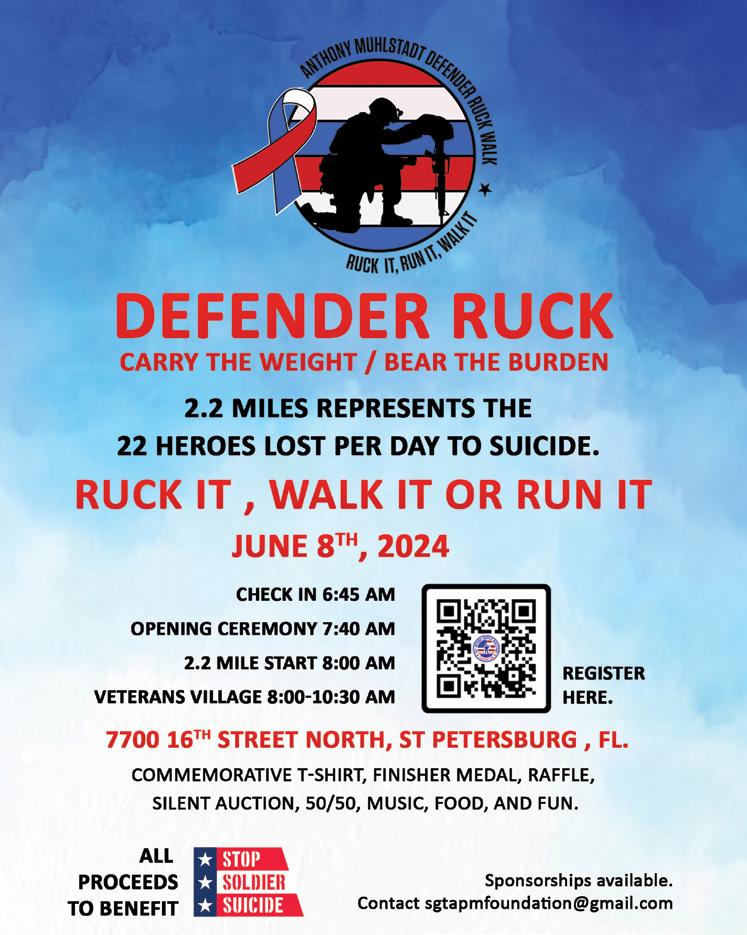
My last article discussed non-invasive treatments for back pain and sciatica. Those treatments can provide relief for many of us and worked on me for quite some time. Unfortunately, my lumbar and sacral pain has now reached the point where I can no longer just “suck it up.”
I have lived with lower back pain for over 40 years, but the addition of sciatica has taken this to a whole new level. It appears my “warranty” has run out—and just like with a car, that is when everything starts to go south!
The NMES (neuro-muscular electronic stimulation) belt that I discussed in my last article is no longer enough by itself to provide me relief.
I wanted to explore what other treatments are available before I consider actual back surgery (fusion of my spine at L4-L5). After consulting with a neurosurgeon several years ago, he told me I did not need him because I walked into his office.
“When you crawl into my office, that’s when you will need me,” my neurosurgeon said. He then showed me a spine model with rods on each side of L4-L5, stating I may eventually need this.
My primary doctor recommended I make
an appointment with Dr. Maxey at USA Spine. After reviewing my MRIs, examining me, and discussing my situation, she recommended spinal injections.
Understand that this is a pain management procedure, not a cure!
The procedure in my case was Bilateral Lumbar Transforaminal Epidural Steroid Injections at Lumbar 4/5 and Sacral 1.
This procedure is not as bad as it sounds! You have the option of having general or local anesthesia. Several of the patients that day selected general anesthesia. However, I chose the local, consisting of injections of lidocaine at each of the four epidural injection sites.
Anyone who has had lidocaine injections knows this is the worst part. It’s that jab, followed by the burning sensation. The only thing you feel after that is minor pressure at each site as the doctor guides the needle by X-ray to the exact location necessary, and then the steroid (dexamethasone) is injected.
They place a Band-Aid over each injection site, and you are done! The whole procedure took less than 15 minutes. I spent more time on the paperwork than I did in the procedure.
I felt some minor immediate relief in my lumbar region. However, there was no immediate relief for the sciatica. I was told it may take 48 hours to feel relief and up to a
couple of weeks for more consistent relief.
As I write this, I am 1 week post injections and have positive results in both areas. It is still more noticeable in the lumbar region, but the sciatica has some relief. I still have good and bad days, but the god days are becoming more frequent.
The doctor told me I could have these injections two-to-three times per year and plan to follow that regimen until such time as I need to try something more aggressive.
I had an appointment yesterday at the VA neurology clinic, and they have scheduled another MRI of my back with a follow-up with a neurosurgeon to determine possible ways ahead in treating my back issues.
As Dr. Maxey recommended, I will continue getting other opinions to ensure I am wellinformed of all the options before the dreaded fusion.
Disclaimer: I am not a medical professional. These are my individual experiences, provided as a reference to assist you in dealing with this all-too-common problem. Please consult with your medical professional.
Richard Corson is a FireWatch Magazine Health & Wellness Contributor.


Dogs have held crucial roles in American conflicts since the Civil War.
Nearly 5000 K9s served in the Vietnam War, where their exceptional hearing and sense of smell helped to save a reported ten thousand U.S. Troops.
Their effectiveness put a bounty on their heads. High rewards were set for acquiring a dog handler’s shoulder patch or the tattooed ear of a service dog.
The U.S. Government considered Vietnam-era service dogs equipment, with no plan to evacuate the four-legged warriors as the conflict ended. Service dogs were left to the South Vietnamese, where many were euthanized.
In the end, only about 200 dogs made it home to America.
Through consistent effort, service dog handlers won an incredible victory with Congress’s passing of “Robby’s Law” in 2000. This law requires the Secretary of Defense to submit a report to Congress each year on the placement of prior service dogs.
K9 Heroes come from all over the world. However, there is a push to use only American-bred dogs for service. The DOD Military Working Dog Breeding Program, known as “The Puppy Program,” is housed at the 341st Training Squadron at Joint Base San Antonio, where 50-to-90 puppies are born into the program each year.
To find out more about “The Puppy Program” and how you might get involved, visit the program’s Facebook page at www.facebook.com/DoDMWDBreedingProgram.
Hindsight is bewildering. The idea that you are headed in one direction only to be redirected into a life you could never have imagined is surreal. And now you have a life you wouldn’t trade now for the world.
The United States came out with the draft lottery system in December of 1969. Young men were assigned a random number corresponding to their birthdays. Those lucky enough to be enrolled in college received a 2-S deferment that lasted until graduation, or the registrant reached 24.
Larry Pratt had his 2-S deferment and was happily attending college when his father was laid off from work. Larry decided to take a semester off to return home and help his family. It was during that semester off that Larry received his draft notice.
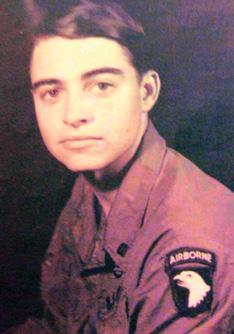
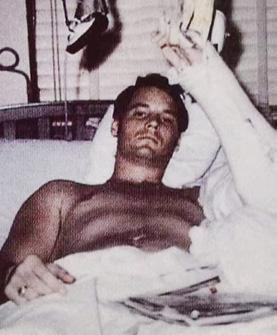
Military Training and reminded Larry that as a two year, there were no guarantees.
Everyone knew you would be drafted if your assigned number was below 100. Larry’s number was 56.
Larry was drafted.
“After I was drafted, I went to the recruiter to find out where I would go,” says Larry, “I told the recruiter I didn’t want to be in service for more than two years. When he saw my draft notes, he said, ‘Kid, you’re already drafted!’”
He said he would try to change my US. designation (designation for draft) to RA, which was Regular Army. This would set me as Enlisted.
“I can change you from US to RA, but I can’t guarantee anything,” the recruiter said.
He asked Larry what he wanted to do. “The easiest job I can get and get out,” Larry replied.
He put him in for military police.
Soon after, Larry headed to Ft. Ord in California for basic training.
When training was completed, Larry approached his Drill Seargent and asked, “Can you tell me what’s going on? I’ve only got two days off, and I’m reporting to AIT. What is AIT?”
The Drill Seargent explained that AIT was Advanced
So, Larry wouldn’t be Military Police; he would be Infantry—because that is where the military needed him.
Larry went to Travis Air Force Base to await deployment orders once AIT was completed.
“There was a bulletin board with lists telling you when you were deploying. Every morning, we would all go down and see if we were on the list. We knew we were going; we didn’t know when.”
The wait was excruciating, but at least not very long. For Larry, it was just two days.
Boots on the ground in Vietnam meant more training. This time P Training—training in the trenches—but still training.
While there, Larry meets Doug Hunter, a Sergeant at the time, on his third tour in Vietnam. Doug was originally from Maryland, as was Larry, so they quickly formed a friendship.
When orders were issued, both men were to join up with the 101st Airborne Division. So, they jumped in a “Deuce and a Half” for the journey. Doug had been here before. Many of the troops knew him, but they knew him as “Lumpy.”

“Larry, show me your orders again,” Doug says. So, Larry showed him.
“Ooohhhh, you’re going to Recon,” Doug says, “You don’t want to go to Recon.”
“I didn’t want to go into the Army,” Larry says. “I didn’t want to go into Infantry, and I didn’t want to go to Vietnam, so it makes sense I would be going to Recon.”
Recon was a six-man group that would go and find the enemy so platoon or company strength units could eliminate them. It was higher on the danger scale than alternate duties.
Before Larry could deploy with his new Recon Team, Lumpy approached him with his company commander from Delta Company and his lieutenant from the second platoon.
“Hey, I’ll tell you what, if you come and walk point for the second platoon, I’ll take you out of Recon,” the company commander offers.
“Do it! That it is the right decision,” Doug urges Larry. With the trust built through their friendship, Larry agrees
and deploys with the second platoon of Delta Company.
Just four days later, Larry would be on his first mission with the second platoon, helicopters and all.
November 2, 1970. There were probably 20 guys in Larry’s platoon consisting of five- or six-man squads. Larry walked point while Lumpy walked behind him. Sometimes, they would trade off positions.
On this day, they had stopped to eat lunch. Larry had gone to higher ground to keep a lookout while Lumpy sat across from the medic on lower ground. Vietcong had snuck into the group and opened up with an AK47 and a 30-round clip, hit Lumpy eight times, and hit the medic once.
Larry knew his friend was hit because he was yelling for a tourniquet. Larry crawls down the slope amidst the firefight to his friend and starts to bandage him up while checking his wounds.
Lumpy was hit really badly.
Larry finds the medic gasping for air from a hit in the
chest that punctured his lung and hit a major artery. The medic died on the spot. But Lumpy survived.
Lumpy went through many surgeries in Japan and later at Walter Reed.
Lumpy had a colostomy bag and an artificial bladder. His shoulder was blown out, and his hands and wrists were also damaged.
Lumpy found his way home to Maryland after a stay at Walter Reed and ultimately called Larry, who, after the war, was living in California.
“He called me up, and I moved him out to California with my family,” says Larry. “We were best friends. He eventually married and moved to Roanoke, Virginia, with his new wife. We talked on the phone daily, and I visited him often.”
Lumpy died in March of 2014.
“When Lumpy died, his wife called me and asked if I could get any of the guys from the platoon to come and be pole bearers,” says Larry, “I told her I would try, but we
hadn’t really gotten together or anything. I was able to call a guy who knew a guy who knew a guy. I discovered our company commander was still alive and knew our platoon Seargent lived in New York. Between the three of us, we got all of them there.”
As the men of second platoon sat in a Virginia hotel lobby, they decided they should get together more often. From that point forward, they met every other year.
“We get together; those of us still alive, we’ve lost some. They are great guys. We are best friends all the way around.”
Someone asked Larry, “If you knew then what you know today, would you have taken that semester off from school?”
“Yeah, I’d do it again,” Larry says, “Knowing what I know now, being alive, and these guys I’ve met that I fought with, there’s no closer thing.
“It’s like the Bible says, ‘No greater love than one being willing to lay down his life for another.’
“It’s a bond that is hard to describe.”

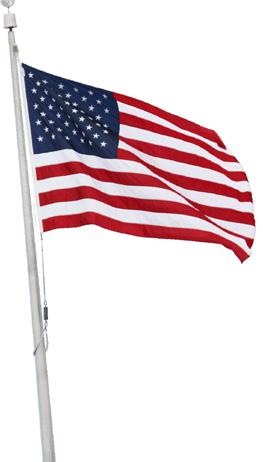

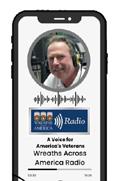

Protect your investment with the roof that fits your style and your budget.





We offer FREE, honest assessments, best-in-class service, quality materials, & exceptional workmanship since 1978. With 3 convenient locations to serve ALL of Central Florida - there's no reason to compromise on quality or service. Call West Orange Roofing today and let our family cover yours!
CONTACT US

